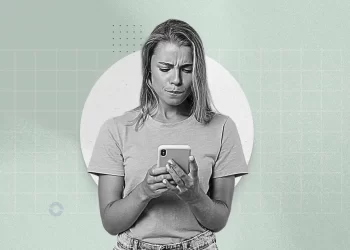The 21st century has marked a radical shift in our attitude towards mental illness. Traveling a couple of decades into the past, mental illness was a taboo topic people did not openly talk about. Those who suffered from it were often misunderstood and not given the help they needed. People with anxiety were being told age-old sayings such as “just stop stressing” or “just relax” that are still being said to this day, as if that ever helped. In some cases, people with mental illnesses were deemed crazy and thrown into institutions where they had to endure many cruel treatments.
Fortunately, our reservations have changed with empathy, and our judgment has been replaced by understanding. Although social media is often cited for its contribution to the rise of negative feelings, thanks to it, the talk about mental health is experiencing an all-time high. It is great that people are becoming more aware about mental illnesses, and that the stigmas surrounding them are starting to fade away. But there is another side to this that is not so good. In particular, the romanticization of mental illness.
Depression and anxiety are fairly common mental illnesses. They can be quite crippling and life altering. As such, venting about it on the internet is a hardly surprising result. However, there is a very fine line between helping the people understand that mental illnesses are nothing to be ashamed of, and glamorizing it to make it seem cool or trendy. The media and the internet are currently wavering into the wrong side of the issue. And more and more people are beginning to believe that some of the people who talk about mental illnesses online are using these conditions as a tool to get viral.
“i’m disgusting” -me trying to do positive affirmations
— so sad today (@sosadtoday) November 26, 2019
How did it start?
The trend appeared on Tumblr over a decade ago. In the early 2010s Tumblr was full of artsy black and white photographs with quotes like “she just wants to end it all” or “you look so pretty when you cry”. Teenage girls were constantly posting about their depressions, anxiety, and number of other mental illnesses. It was not about helping themselves or others, though. It was more of a search for popularity and a quest to be different. These kinds of posts were getting a considerable number of notes and bringing a lot of followers to the accounts. Soon this began to create a link between depression and popularity. To egg each other on, pro eating disorder communities were sharing photos of women starving themselves to death as thinspiration content. There were even people pretending to have multiple personalities, or who were role-playing as sociopaths.
Bu gönderiyi Instagram’da gör
The problem continued on a different platform.
Then this trend has spread to Instagram. A quick search of #depressed on Instagram currently brings up over 13 million posts. There are many accounts sharing solely to this type of content, often featuring words like sad or depressed in their Instagram handles.
But this isn’t just a social media problem. The media also plays a huge role in this. Many books, movies and even music glamorize mental illnesses at some point.
A recent example of this is 13 Reasons Why.
The show, based on a novel of the same name, focuses on the story of Hanna Baker, who has experienced a series of horrible events. As a result of her depression, she records tapes where she explains everything that happened to her. She ends up killing herself due to her traumas. After her death, she passes the tapes on to those around her so that they feel responsible for her death. The problem is that instead of being framed as a distraught young woman in desperate need of psychological help, Hanna is often framed as if she has a certain wisdom that makes her unable to function in such a cruel world. With the recordings played throughout the show, she is almost portrayed as an angel, who makes the other characters see their mistakes.
Bu gönderiyi Instagram’da gör
The romanticization of her health problems is even more evident in posts on social media. A quick search for Hanna Baker on Tumblr gives us a good impression of how teenagers view her character. Relevant hashtags are full of beautifully lit shots of her crying or black and white gifs with captions like “what if it’s too late for everything”. They don’t really show the dark side of her trauma and illness, but rather make her look cool and beautifully broken. This ultimately leads people who see these posts to perceive their turmoils not as an ailment but as an intrinsic part of their personality. That is, something that makes them unique or more interesting than others.
Profiting off mental illnesses
In recent years, selling products that romanticize mental illnesses has become a questionable trend for companies. Big brands like Forever21 among many others started selling the “sad girl” merchandise. Yet, they are not the only one, slogans about mental health are constantly incorporated into fashion with stylized and aesthetic fonts. It’s even possible to find a T-shirt with Kurt Cobain’s suicide letter printed on it. This means that social media has not only normalized mental illnesses but also commercialized it.
I hate this. I WISH I could take my anxiety off like a necklace but instead it’s a choker that gets tighter & tighter when I go out in public, or lay in bed at night, or whenever it wants. Romanticizing mental illness isn’t cute. Making profits off of mental illness isn’t cute. https://t.co/HWZ0NyVeci
— mo wynne (@mowynnie) May 29, 2018
The role of influencers
It is a fact that merchandise and marketing go hand in hand. And since putting a newly released merchandise into the hands of influencers is a smart marketing strategy, Influencers soon got involved in romanticizing mental illnesses, and many of them were criticized for it. Some, like Corinna Kopf, even created their own anxiety-related merchandise.
Bu gönderiyi Instagram’da gör
The vast majority of her followers weren’t thrilled with this. The comments were full of people saying this was incredibly disrespectful and that anxiety is nothing to glamorize. Moreover, as this product seems to target people with anxiety in particular, she was criticized for profiting off of her followers’ illness.
Similarly, Kelsey Darragh received many negative comments to the post in which she promoted the “anxiety queen” merchandise. She was accused of contributing to the prettification of mental illnesses and was not sensitive.
Bu gönderiyi Instagram’da gör
The problem isn’t just about merchandise. By their very nature, influencers are idolized by the same young people vulnerable to glamorized representations of mental illnesses. And because of this, while well-intentioned, more and more influencers are contributing to a particular way of glamorizing mental illnesses by coming out about dealing with their anxiety. Their narratives often leave out the harsh realities of facing these problems and are presented as inspiring content.
For many years now, Instagram has been making efforts to block glamorizing content, banning common problematic hashtags like #proana (pro-anorexia) and highlighting #socialanxiety posts that are focusing on seeking help. However, some accounts still find ways to get around them. According to the researchers, a possible solution would be to modify the system to show results that are far different than what users are looking for. For example, a search for “thinspo” could provide not only thinspiration photos, but also posts from communities recovering from eating disorders.
Beautifying the challenges some people are going through is not only disrespectful but also quite dangerous. Mental illnesses can easily come across as something to aspire to, something necessary to be cool and different. The trendiness of sad culture on social media may lead to false self-diagnoses and inadvertedly trivialization of serious illnesses. Before it’s too late we need to crack down on our perception of mental illnesses on social media. And a change in social media culture could be just what we need to come to a solution.
If you want to talk to someone or are experiencing thoughts of self-harm, text the Crisis Text Line at 741-741 or call the National Suicide Prevention Lifeline at 1-800-273-8255. For international resources, this list is a good place to start.
















Comments 1